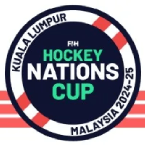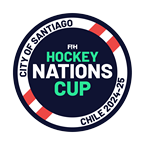
The South African women’s team provided one of the upsets of the World Cup so far by eliminating England. However, the cheering crowds will not have been aware that several of the players had flown home to take crucial university exams in the middle of their final preparations. Unlike in many World Cup countries, the South African players have to combine work, college and international hockey at the same time.
Defender Quanita Bobbs, for example, took a 12 hour flight, sat a crucial university exam and then flew back to join her team mates in the Netherlands.
Bobbs, who is just 20, is one of a handful of South African players struggling to combine going to university with an international hockey career. “It is very hard at times,” she says in the team’s hotel, overlooking the beach at the Dutch resort of Kijkduin. “I try to go to every class I can and get ahead. When I flew back for my exam, I was studying on the plane.”
New level
The South African women’s team are lucky. At least they have a sponsor in the form of investment bank Investec, which has been on board since 2010 and has helped lift the women’s game to a new level. Investec’s support makes it possible for Bobbs and team mates Sulette Damons and Celia Evans to fly home to take exams, keep up their university careers and attend international training programmes.
In the men’s camp, things are different. “A few weeks before the World Cup, we did not now how were going to pay the men’s bills,” says Marisssa Langeni, chief executive of the South Africa Hockey Association, which has just three full-time staffers.
Enormous distances
Fabian Gregory, head coach of the South African men’s team, estimates his squad have spent just 29 days together in the run up to the World Cup, thanks to work commitments and the enormous distances which the players have to cover to meet up. “That’s been our preparation,” he says. “The others would be laughing at as. I’ve been talking to coaches here who see their teams three or four times a week. We see each other at a seven-day training camp.”
A full time sponsor, he says, would make all the difference. Some of the South African men work full time, others are breadwinners. “That puts them under huge financial pressure,” Gregory says. “Sometimes they have to pay for their flights to get to camp and pay for their meals.”
Paid per project
Yet as a team, Gregory says his lads are doing their utmost and are, after all, ranked 12th in the world. “If we had a full time sponsor we could easily be sixth to eighth,” he says. Gregory himself is not a full-time coach but gets paid per project, such as the World Cup.
Langeni recognizes that very few FIH members have national teams with semi-professional status and that puts the South African situation into perspective. “We appreciate where we are,” she says. “But South Africa is a huge country to run programmes that cover both urban and rural locations. Many villages don’t even have a football pitch. Of course we still embrace grass. We can’t afford not to.”
School pitches
Nevertheless, hockey is a popular sport in South Africa and the association estimates around 250,000 people play. Largely school based, the country has some 200 artificial turf pitches. That is changing slowly. Government money has now been ring-fenced for sports, local councils have to spend some 15% of their budgets on sport and the association is working to develop hockey at a primary school level. “However,” says Langeni, ‘just think about how much talent we have missed along the way”.
Meanwhile, the 11th ranked South African women themselves are still glowing from their victory over the world’s number three England. “Now we have a sponsor we are focusing more on what we can do and learning from the experiences we have had,” says Damons. “Now we are able to say we want to win games.”

























